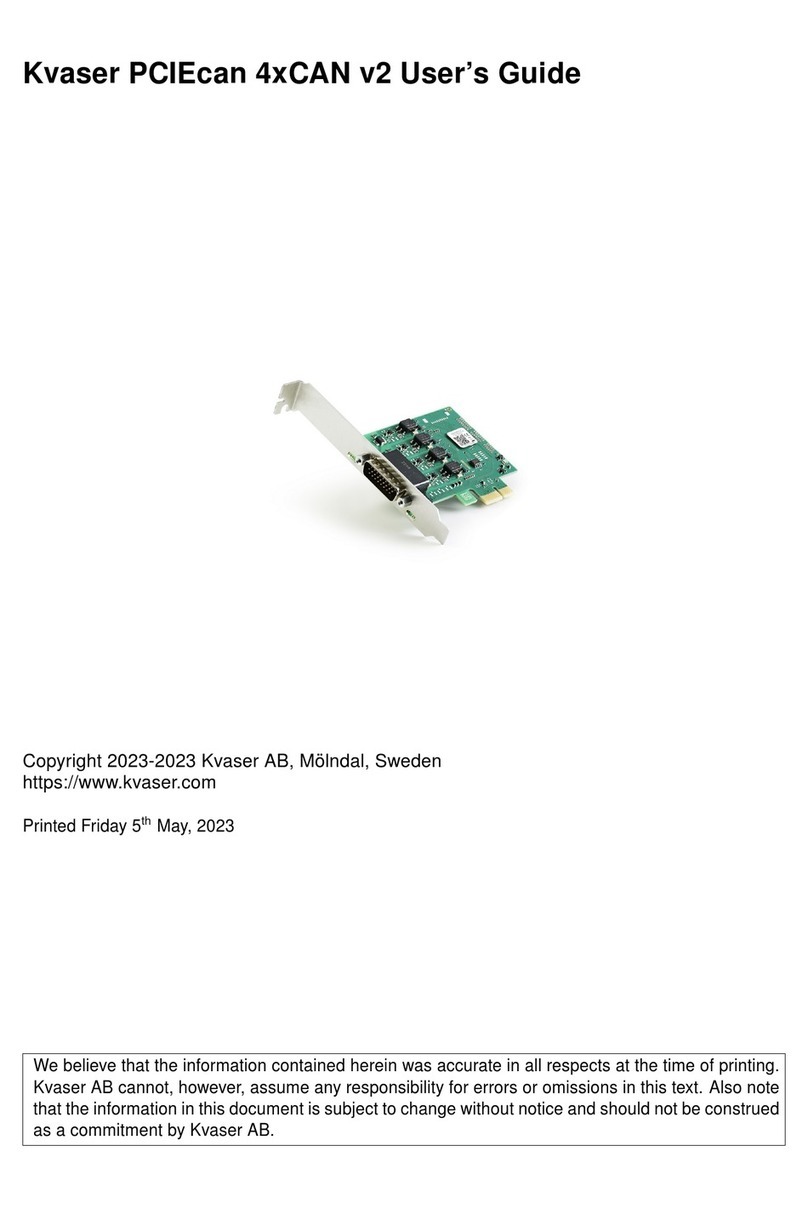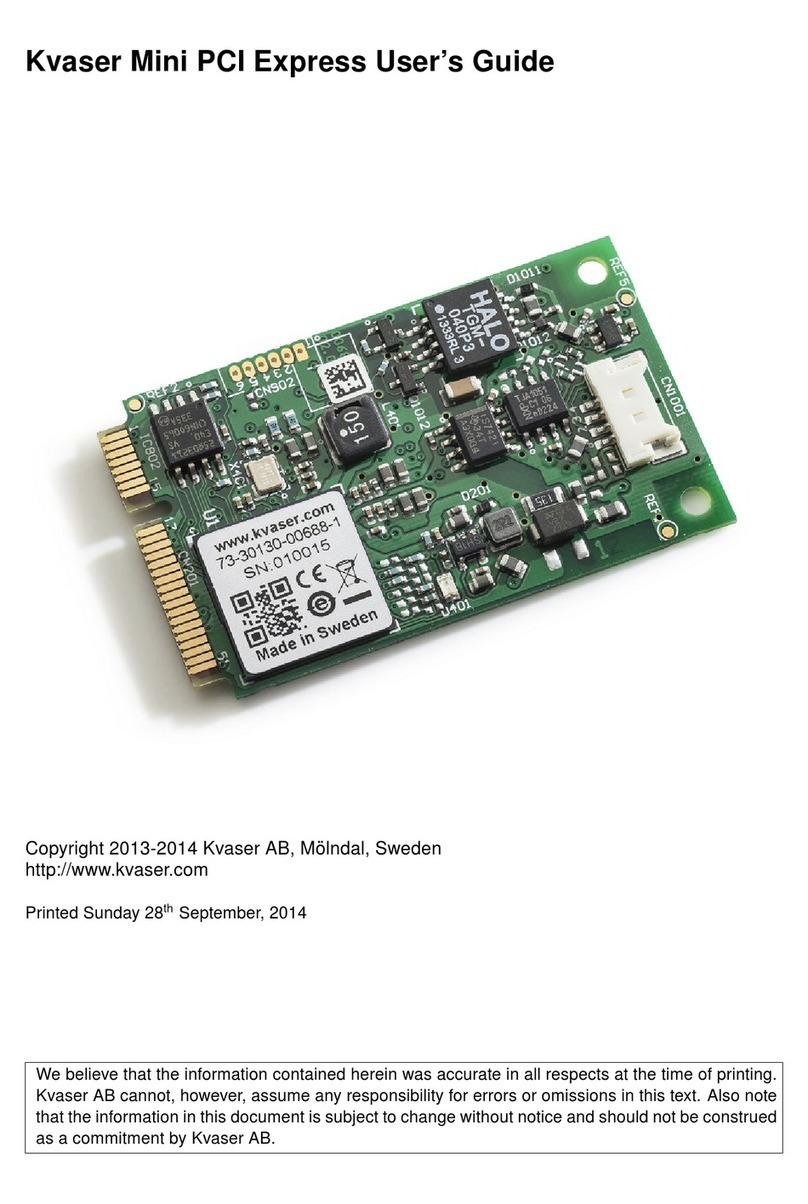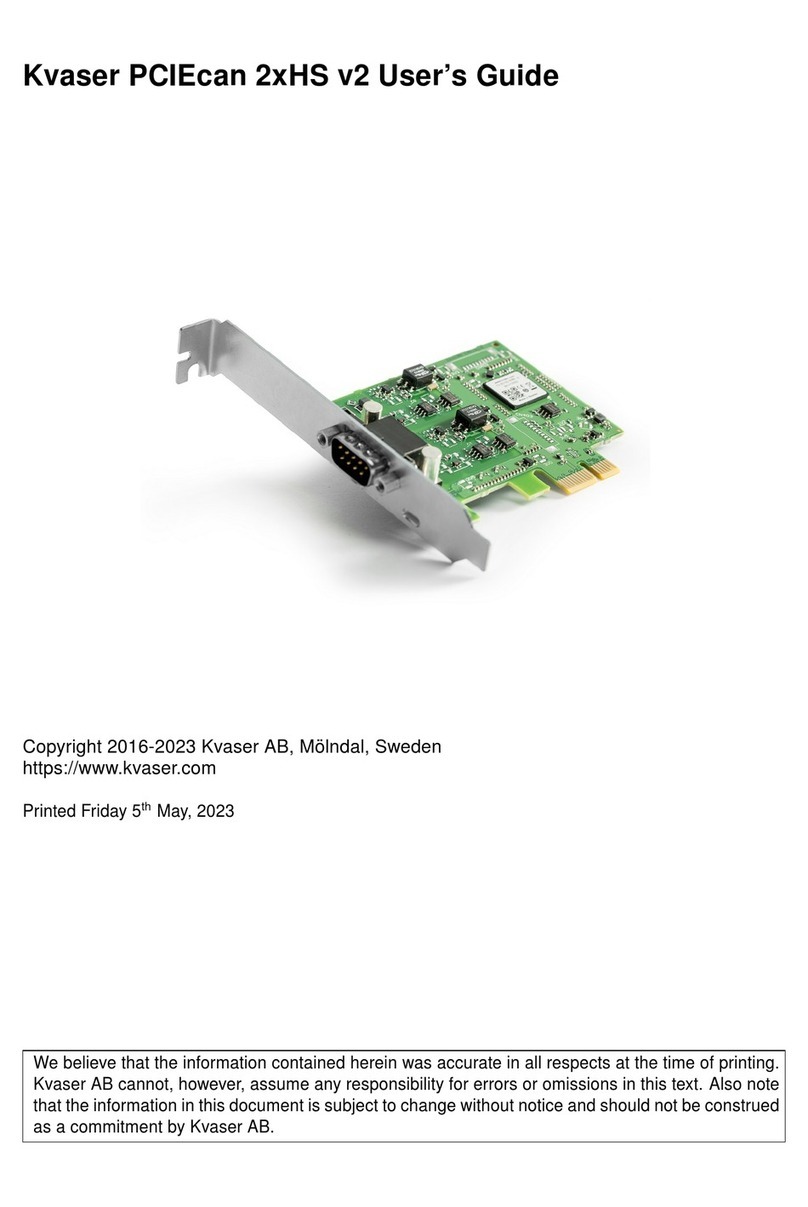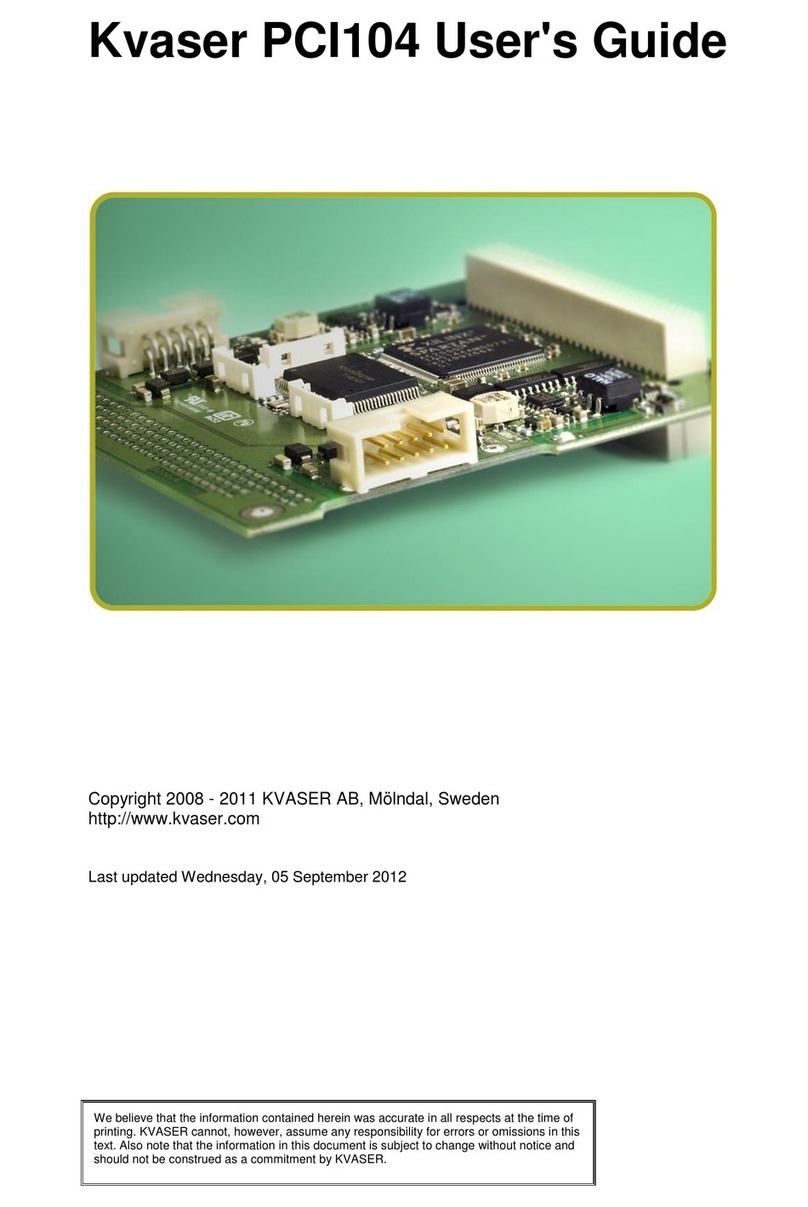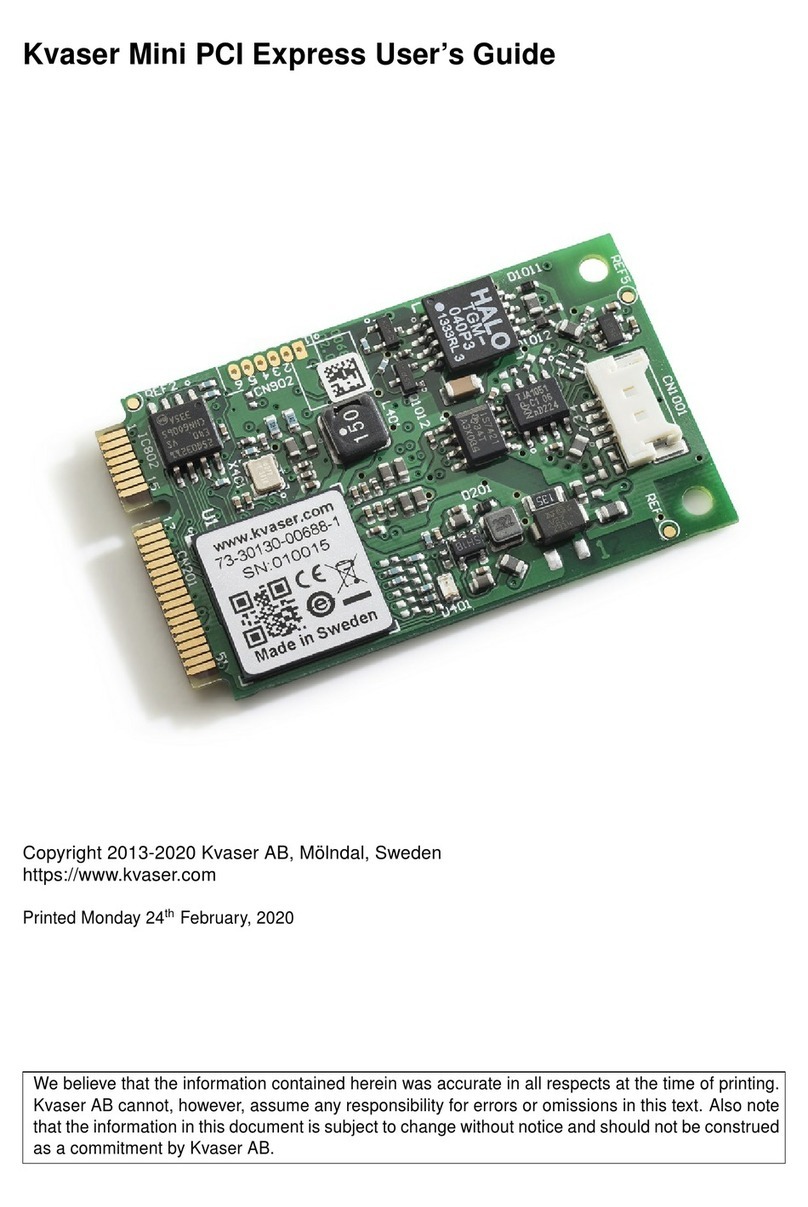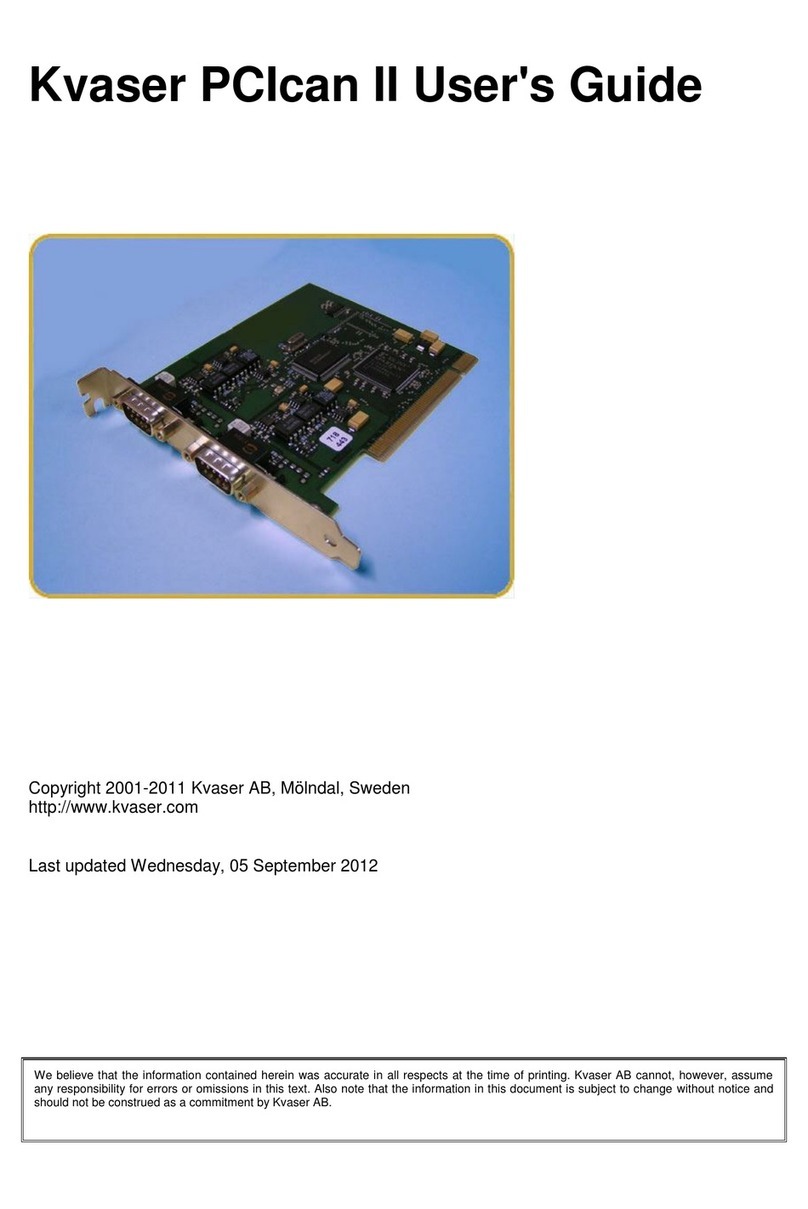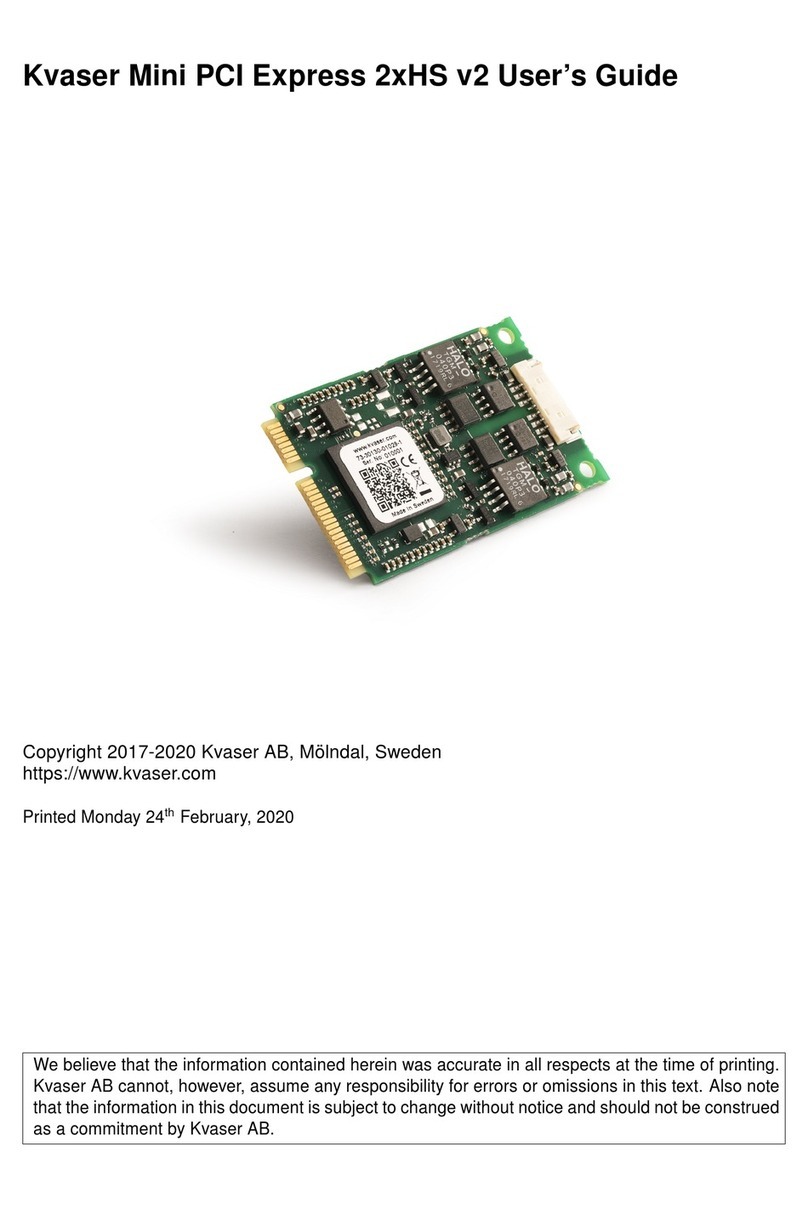
PCIcan Hardware Reference Manual 9(16)
KVASER AB, Sweden - http://www.kvaser.com
Table 2. Switch Pack 2.
SW2- When set to ON, it connects...
1 On-board terminating resistance to common CAN-L.
2 On-board terminating resistance to common CAN-H.
3 CAN-L of SJA1000 #1 to common CAN-L.
4 CAN-H of SJA1000 #1 to common CAN-H.
5 CAN-L of SJA1000 #2 to common CAN-L.
6 CAN-H of SJA1000 #2 to common CAN-H.
7 CAN-L of SJA1000 #3 to common CAN-L.
8 CAN-H of SJA1000 #3 to common CAN-H.
9 CAN-L of SJA1000 #4 to common CAN-L.
10 CAN-H of SJA1000 #4 to common CAN-H.
All switches are set to ON when the product is delivered. This means that all CAN buses and
the terminator are connected to the common bus.
External power supply (PCIcan–SWC2 and –SWC1)
The PCIcan–SWC2 and –SWC1 have a type of CAN bus driver that under certain
circumstances can consume a lot of power. For this reason the bus drivers in these cards are
not powered from the PC. You must supply power to the bus driver from an external source.
The power shall be supplied to pin 9 on the D-SUB connector (s). For PCIcan-SWC2 you
need to supply power to both connectors.
The voltage is nominal +12V DC (min 5.5V, max 26.5V.) Current consumption may go up to
200 mA per bus under certain circumstances.
CAN Bus Termination (PCIcan-Q)
A selectable CAN bus termination is built-in on the PCIcan-Q boards. You activate it by
setting switches 1 and 2 on switch pack 1 to ON. The termination works only on the common
CAN bus. The four individual CAN busses are not affected by the built-in termination.
To avoid signal reflections at the bus ends, terminating resistors must be mounted at both ends
of the CAN bus. The on-board terminating resistor is 120Ω, which is the standard for CAN
buses, and should work fine for most cables. Please observe that this internal resistor can only
be used if the board is placed at one of the ends of the CAN-bus. The terminating resistor is
only available from the on-board common CAN-bus.
The terminating resistors also serves as a load between the CAN bus wires; this is needed for
the ISO 11898 compliant bus drivers to work properly.
